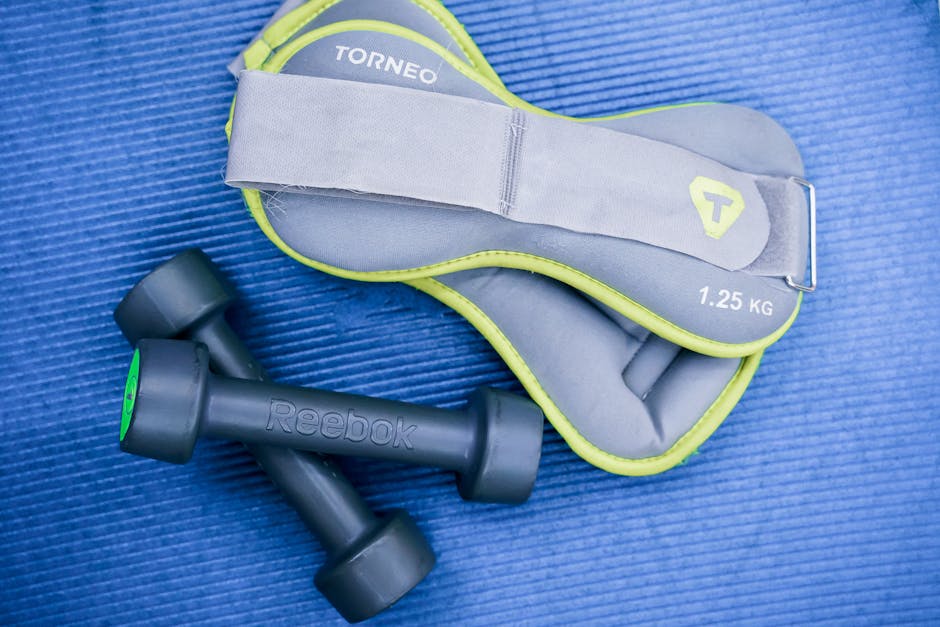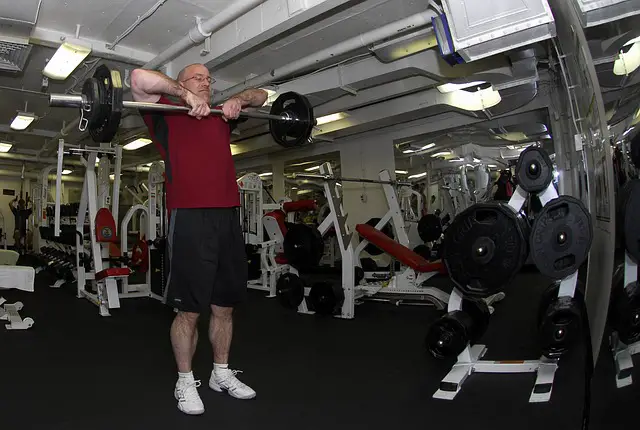Are you looking to lift heavy weights without damaging your spine? Do you want to avoid becoming that guy who can only bench press a feather after years of back pain? Well, fear not, because the solution to your problem is just a belt away! That’s right, a weight lifting belt can provide support and stability during your compound lifts. But before you go strapping on any old belt like a cowboy ready to wrangle cattle, let me tell you about the proper way to use a weight lifting belt. Because let’s face it, you don’t want to end up being the punchline of a gym joke.
Contents
- 1 1. Introduction: Understanding the Purpose of a Weight Lifting Belt
- 2 2. How to Choose the Right Weight Lifting Belt for You
- 3 3. Proper Placement: Where to Wear Your Weight Lifting Belt
- 4 Proper Placement: Where to Wear Your Weight Lifting Belt
- 5 4. Using Your Weight Lifting Belt: Technique and Safety Guidelines
- 6 5. Conclusion: Making the Most of Your Weight Lifting Belt for Optimal Performance
- 7 Wrap it Up Right!
1. Introduction: Understanding the Purpose of a Weight Lifting Belt
Before we start lifting some heavy-ass weights, let’s talk about the one accessory that could save your spine from snapping like a twig – the weight lifting belt. Now, I know you’re probably thinking “Pffft, I don’t need a belt. I’ve been lifting weights for years without one.” Sure, you might not feel any pain now, but just wait till you feel like an 80-year-old grandpa when you’re only 30.
The primary purpose of a weight lifting belt is to provide support to your lower back muscles and abdominal wall during heavy lifts. It’s like a warm, hug for your spine. The belt does this by increasing intra-abdominal pressure (fancy talk for “it squeezes your gut”) which stabilizes your core and lowers the risk of injury. In short, it’s the safety net you need to lift heavy af
Now, before you go and buy any belt, there are a few things you need to keep in mind. Firstly, the thickness of the belt – thinner belts are better for powerlifters and thicker ones are better for bodybuilders. Secondly, the width of the belt – the wider the better, as long as it doesn’t interfere with your range of motion. And lastly, the material – leather is the most durable option while nylon is the most comfortable one. Pick the belt that works best for you and never lift without it. Remember, you’re not Houdini, you can’t just wiggle out of a back injury.

2. How to Choose the Right Weight Lifting Belt for You
So, you’ve finally decided to add a weight lifting belt to your gym bag. Well, that’s a great decision! A weight lifting belt helps to support and stabilize your back during heavy lifts. But wait, don’t just grab any belt off the rack, you need to choose the right one for you. Here are some tips to make sure you choose the perfect belt.
Firstly, consider the thickness of the belt. You don’t want a belt so thin that it feels like a hair band nor do you want one as thick as a car tire. So, what’s the right thickness? The answer is simple – Goldilocks it! Choose a belt that is not too thin and not too thick, somewhere in the middle. This will provide ample support without compromising flexibility.
Next, let’s talk about durability. With great power comes great responsibility, and with heavy weights, comes a lot of sweat. You don’t want your belt deteriorating after just a few sweat sessions. So, make sure you invest in a belt made with sturdy materials that can withstand the test of time and sweat. Bonus points for belts that are easy to clean because cleaning a sweaty belt is not your idea of a fun time.
Last but not least, the fit. If the belt doesn’t fit you properly, it’s as useful as a chocolate teapot. So, make sure you measure your waist before purchasing and consult the size chart provided by the manufacturer. You also want to make sure that the belt feels snug without being too tight. It’s always better to err on the side of caution and go for a slightly looser fit rather than a too-tight fit that restricts your breathing. Trust us; you don’t want to pass out mid-lift.
3. Proper Placement: Where to Wear Your Weight Lifting Belt
Proper Placement: Where to Wear Your Weight Lifting Belt
First off, let’s get one thing straight: wearing your weight lifting belt as a fashion accessory is not cool. We get it, you want to show off your gains, but let’s leave the belts for the actual lifting.
So, where should you actually wear your weight lifting belt? The answer is simple: around your waist, just above your pelvic bone. Not too tight that you can’t breathe, but not too loose that it falls off halfway through a deadlift.
But wait, there’s more. Did you know that wearing your weight lifting belt upside down is a thing? Yes, apparently some people do this and we’re still trying to figure out why. So, let us make it clear – the buckle should be in the front, guys. We don’t want any unnecessary accidents happening down there.
- Wrap the belt around your waist
- Adjust it to the right tightness
- Make sure the buckle is in the front
So there you have it, folks. Proper placement of your weight lifting belt isn’t rocket science, but it’s definitely an important aspect of your lifting routine. Just remember, keep the belt where it belongs and leave the fashion statements for the runway.
4. Using Your Weight Lifting Belt: Technique and Safety Guidelines
Alright, folks, buckle up! Or should we say, buckle on! We’re here to talk about the proper technique and safety guidelines for using your weight lifting belt.
First things first, let’s talk about how to wear the darn thing. You want to make sure the belt is snug around your abdomen, but not so tight that you can’t breathe. And please, for the love of all that is holy, make sure the buckle is in the front. We don’t need any accidental whiplash incidents when you’re trying to do a set of dumbbell curls.
Now, onto the actual lifting technique. Remember that your weight lifting belt is there to provide support, not do the work for you. So, when you’re lifting, make sure to engage your core muscles and use proper form. And if you’re tempted to use the belt as a crutch and lift heavier than you should be, think again. Your belt won’t protect you from injury if you’re being reckless.
In summary, when it comes to your weight lifting belt, just remember to wear it correctly, use it as a tool to support proper form, and don’t try to cheat your way to heavier lifts. With those guidelines in mind, you’ll be on your way to becoming a belt-wearing, weight-lifting pro in no time.
5. Conclusion: Making the Most of Your Weight Lifting Belt for Optimal Performance
When it comes to weight lifting, there are a few things every gym-goer should know. And while it may seem like a small detail, wearing a weight lifting belt can be a game-changer. So, whether you’re a seasoned weight lifter or a newbie just figuring out the ropes, here are some tips on how to make the most of your weight lifting belt to achieve optimal performance:
1. Wear your weight lifting belt correctly: There’s a right way and a wrong way to wear a weight lifting belt. Make sure it’s snug around your waist and positioned over your belly button. This will help you brace your core and stabilize your spine during heavy lifts. Plus, you’ll look like a total pro.
2. Choose the right belt for you: Not all weight lifting belts are created equal. Some are thick and rigid, while others are more flexible. Figure out what works best for you and your lifting style. Do you want a belt that provides maximal support or do you prefer something that allows for more mobility? Experiment and find the perfect belt for your needs.
3. Don’t rely solely on your belt: A weight lifting belt should never be a crutch. It’s there to assist you, not do the work for you. Remember to engage your core muscles and breathe properly during your lifts. And while a belt can help you lift heavier weights, don’t sacrifice good form for the sake of adding plates to the bar.
So there you have it, folks. A weight lifting belt can be a valuable tool in your training arsenal. Wear it correctly, choose wisely, and don’t rely on it too much. Most importantly, have fun and lift heavy. Happy lifting!
Wrap it Up Right!
Now that you know the proper way to use a weight lifting belt, you can say goodbye to those embarrassing gym fails and hello to a whole new level of gains. Remember to always consult with a professional trainer before starting any exercise program, and to listen to your body. Don’t go lifting heavy if you’re not feeling it.
We hope that this guide has been helpful, and that you now feel confident in your ability to wrap it up right. But hey, if all else fails, just use it as a fashion accessory and rock that weight lifting belt with confidence. After all, at the end of the day, it’s all about feeling good and looking even better while doing it. Happy lifting!








Leave A Comment